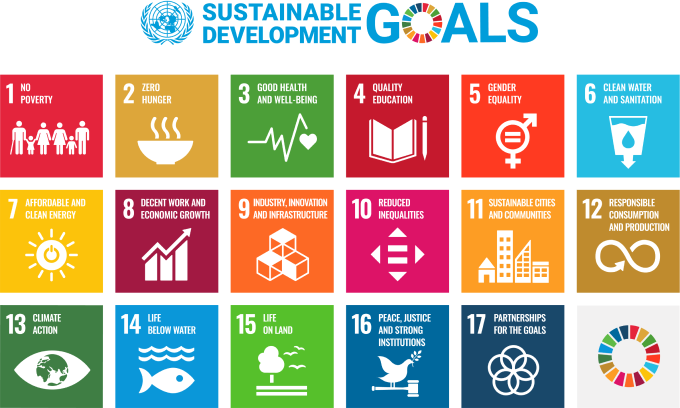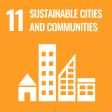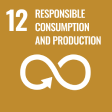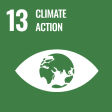Explore
In 2015, the United Nations (UN) and its member states developed a strategy for sustainable development. This is “[…] a shared blueprint for peace and prosperity for people and the planet, now and into the future” (United Nations). The strategy will run for 15 years, which ends in 2030 and is called Agenda 2030. 17 Sustainable Development Goals (SDGs) and 169 subgoals were developed to ensure sustainable economic, social, and ecological development. The five key messages are people, planet, prosperity, peace, and partnership („5 Ps“). And the rule is: Leave no one behind!

The central aspects of the goals are the advancement of economic growth, the reduction of disparities in living standards, the creation of equal opportunities, and the sustainable management of natural resources. It is about transforming economies toward sustainable development, for example, through responsible consumption and production patterns as well as clean and affordable energy. It becomes clear that climate policy, sustainable development and poverty reduction are inextricably intertwined.
What SDGs does the Seniors4Change project address?
Four critical Sustainable Development Goals (SDGs) that directly impact our global community are SDG 3 (Good Health and Well-being), SDG 11 (Sustainable Cities and Communities), SDG 12 (Responsible Consumption and Production), and SDG 13 (Climate Action).
SDG 3: Good Health and Well-being aims to ensure healthy lives and promote well-being for all ages. This goal addresses various health issues, including communicable diseases, maternal and child health, mental health, and access to essential healthcare services. Achieving this goal requires investing in healthcare infrastructure, promoting preventive measures, and ensuring universal access to quality healthcare services.


SDG 11: Sustainable Cities and Communities focuses on making cities and human settlements inclusive, safe, resilient, and sustainable. This goal addresses challenges such as urbanisation, inadequate housing, air pollution, and lack of basic services in urban areas. To achieve SDG 11, efforts are needed to improve urban planning, upgrade slums, enhance access to affordable housing and transportation, and create green and public spaces.
SDG 12: Responsible Consumption and Production promotes sustainable consumption and production patterns. This goal emphasises the need to decouple economic growth from resource use and environmental degradation. Achieving SDG 12 involves reducing waste generation, increasing resource efficiency, promoting sustainable lifestyles, and ensuring the sustainable management of natural resources throughout their life cycle.


SDG 13: Climate Action addresses the urgent need to combat climate change and its impacts. This goal calls for measures to mitigate greenhouse gas emissions, adapt to climate change impacts, and build resilience to climate-related hazards. To achieve SDG 13, countries must strengthen climate policies, invest in renewable energy sources, promote sustainable land use practices, and enhance climate resilience in vulnerable communities.
By working towards these SDGs, governments, organisations, and individuals can contribute to building a more sustainable and equitable world for current and future generations.
How do DIYs promote creativity, social connection, affordability, and eco-consciousness?
Firstly, DIYs encourage creativity by allowing individuals to express themselves through hands-on activities. Seniors often find joy and fulfilment in exploring their creative sides through crafting, woodworking, gardening, or other DIY endeavours. This creative expression enhances cognitive function and promotes emotional well-being and a sense of accomplishment.
Secondly, DIY projects offer avenues for socialisation and community engagement, vital for seniors’ mental and emotional health. Participating in group activities like crafting circles, community garden projects, or repair workshops fosters connections with peers and strengthens social bonds. These interactions combat feelings of loneliness and isolation often experienced by seniors, promoting overall well-being and a sense of belonging.
Moreover, DIYs can be a cost-effective alternative to purchasing new items or hiring repair professionals. Seniors with fixed incomes or limited financial resources can benefit significantly from learning DIY skills to maintain and improve their living spaces. By repurposing materials, refurbishing furniture, or growing their food, seniors can save money while reducing their environmental footprint.
In terms of environmental sustainability, DIY projects promote resourcefulness and waste reduction. By reusing materials, upcycling old items, or repurposing household goods, seniors can minimise their consumption of new resources and divert items from landfills. For example, repurposing old clothing into quilts or turning household containers into planters reduces waste and contributes to a more sustainable lifestyle.
Case studies further highlight the impact of DIY projects on seniors and sustainability. For instance, a community garden initiative involving seniors provides fresh produce for participants, fosters a sense of community, and promotes sustainable agriculture practices. Similarly, a repair café where seniors share their skills in fixing household items extends the lifespan of those products and reduces the demand for new replacements, thus decreasing environmental impact.
In summary, DIYs hold immense significance for seniors and sustainability by fostering creativity, socialisation, affordability, and environmental consciousness. Through hands-on projects and community engagement, seniors can enhance their well-being while contributing to a more sustainable future for generations.
Case Studies and Best Practices
In a previous stage of the project, we diligently gathered best practices from various partner countries. These practices shed light on the sustainable habits already embraced by seniors in their daily lives. Below, you’ll find an overview of the practices identified, showcasing the innovative ways seniors contribute to a greener and more sustainable future. Let’s explore the knowledge and inspiration gleaned from this collaborative effort.
- Community gardens/Shared urban gardening: These initiatives provide spaces where community members can collectively grow fruits, vegetables, and herbs. They foster a sense of belonging, promote sustainable food production, and encourage healthy eating habits.
- Repair cafés: Repair cafés offer a supportive environment for individuals to learn repair skills and fix broken items like electronics, clothing, and furniture. By extending the lifespan of products, they promote resource conservation and reduce waste sent to landfills.
- Foodsharing/Foodsaving: These movements aim to minimise food waste by redistributing surplus food from businesses and households to those in need. Whether through community fridges, food banks, or online platforms, they help address food insecurity while promoting sustainability.
- Handicrafts: Engaging in handicrafts allows individuals to create unique, handmade items while promoting creativity and self-expression. Handicrafts contribute to cultural preservation and sustainable consumption practices by supporting local artisans and traditional crafting techniques.
- Woodwork: Woodworking involves crafting objects from wood using sustainable materials and techniques. By creating durable and long-lasting wooden products, woodworking promotes resource efficiency and reduces the environmental impact of furniture and construction.
- Knitting/Crocheting: Knitting and crocheting are textile crafts that enable individuals to create clothing, accessories, and home decor items using yarn or thread. By producing handmade items, knitting and crocheting promote sustainability by reducing reliance on mass-produced goods and supporting local fibre producers.
- Upcycling: Upcycling involves repurposing discarded or unused materials to create new, higher-value products. It encourages creativity, reduces waste, and promotes sustainable consumption by giving new life to old items.
- Zero Waste/Recycling: Zero waste and recycling initiatives aim to minimise waste generation and maximise resource recovery. They involve composting organic waste, recycling materials, and reducing single-use items to minimise environmental impact and conserve resources.
